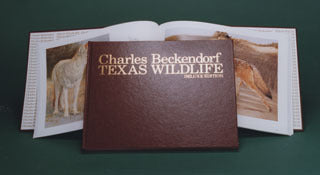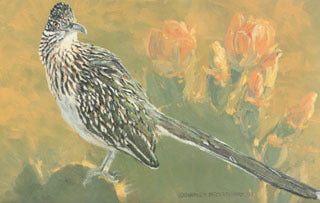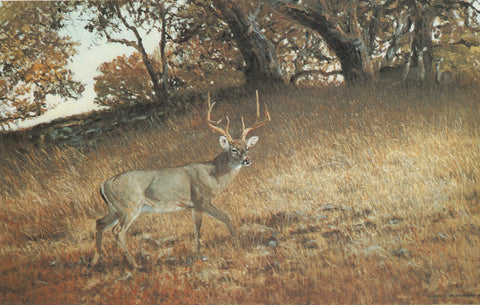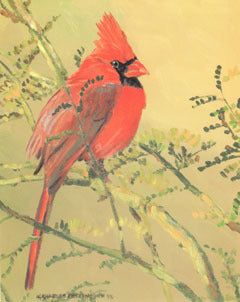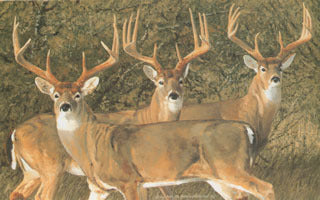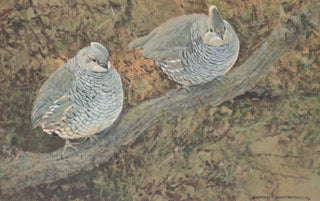
H-22 | Scaled Quail
Color Reproduction | By Charles Beckendorf
Additional Information
The Scaled Quail, better known as blue quail, range from deep South Texas through the Trans-Pecos and West Texas through the Panhandle. It is the quail most often seen in West Texas.
They are distinguished by the scaly markings on their breasts and the white "cottontop" on their heads. These quail prefer to run from threat rather than fly, and they zip through the desert scrub with amazing speed.
Nests are usually located under shrubs or in some other protected and shaded site, and a clutch of 12 to 14 eggs is typical. Sometimes the male will take over the care of the newly hatched brood, allowing the female to begin a second clutch.
As the chicks mature, broods gradually become organized into coveys of 20 to 50 or more birds.
Some blue quail will come to ranch houses and eat grain with the chickens and take shelter in nearby ranch equipment. During mid-day, they often rest in trees, but at night they seem to prefer to stay on the ground.
The call of the blue quail is a low nasal whistled "pe-cos, pe-cos" and a louder barking "kuck-yur, kuck-yur."
The blue quail of deep South Texas is a little smaller and darker, and the adult birds have a chestnut colored spot on their abdomens.
This is a part of the Texas Wildlife Art Prints Collection.
Color Reproduction
The Scaled Quail, better known as blue quail, range from deep South Texas through the Trans-Pecos and West Texas through the Panhandle. It is the quail most often seen in West Texas.
They are distinguished by the scaly markings on their breasts and the white "cottontop" on their heads. These quail prefer to run from threat rather than fly, and they zip through the desert scrub with amazing speed.
Nests are usually located under shrubs or in some other protected and shaded site, and a clutch of 12 to 14 eggs is typical. Sometimes the male will take over the care of the newly hatched brood, allowing the female to begin a second clutch.
As the chicks mature, broods gradually become organized into coveys of 20 to 50 or more birds.
Some blue quail will come to ranch houses and eat grain with the chickens and take shelter in nearby ranch equipment. During mid-day, they often rest in trees, but at night they seem to prefer to stay on the ground.
The call of the blue quail is a low nasal whistled "pe-cos, pe-cos" and a louder barking "kuck-yur, kuck-yur."
The blue quail of deep South Texas is a little smaller and darker, and the adult birds have a chestnut colored spot on their abdomens.
This is a part of the Texas Wildlife Art Prints Collection.
Beckendorf color reproductions are developed using four color process printing on fine white paper. This advanced technique utilizes separate color plates for each of the primary colors, plus black. High-resolution digital scans and special process inks are utilized to yield beautiful, accurate reproductions.
About the Artist - Charles Beckendorf
Charles grew up in Mathis, Texas, where he had the opportunity to spend hours on large ranches. Generous land owners gave him permission to wander freely over their ranches and he observed creatures in their natural surroundings. He developed a lifelong love of nature, whether it be in the tiniest of flowers or the largest of animals. It was at this time that he became a true naturalist.
We Also Recommend
REVIEWS

